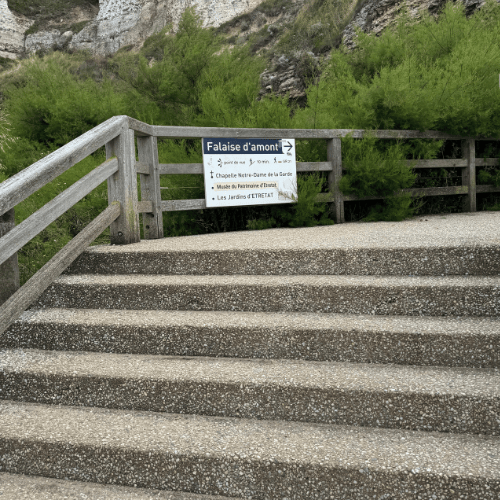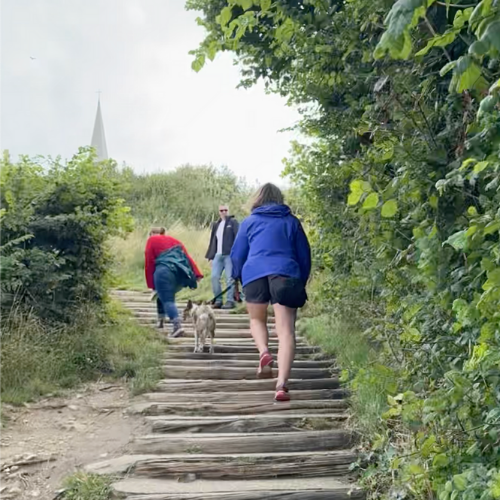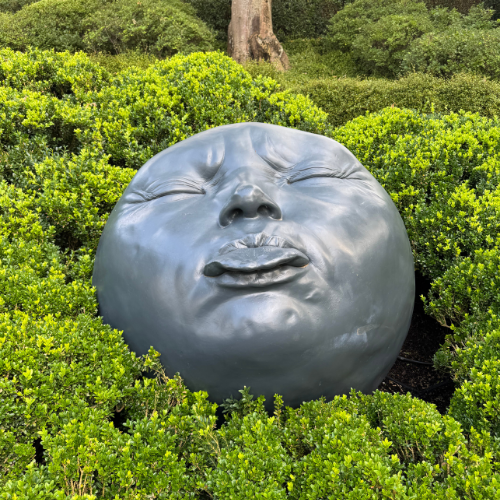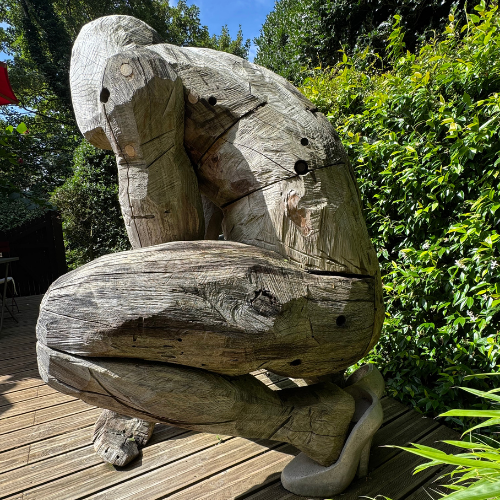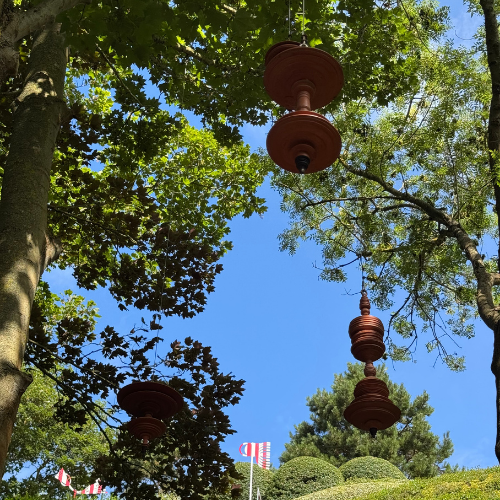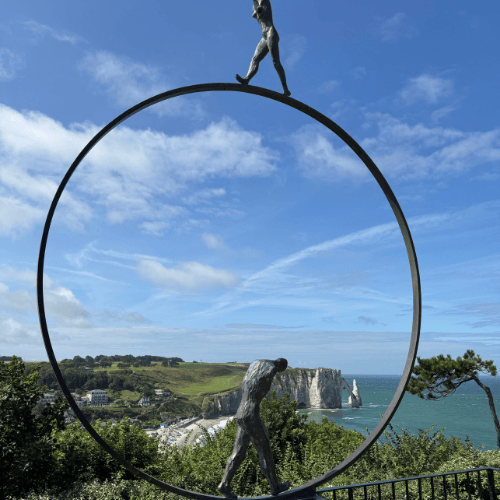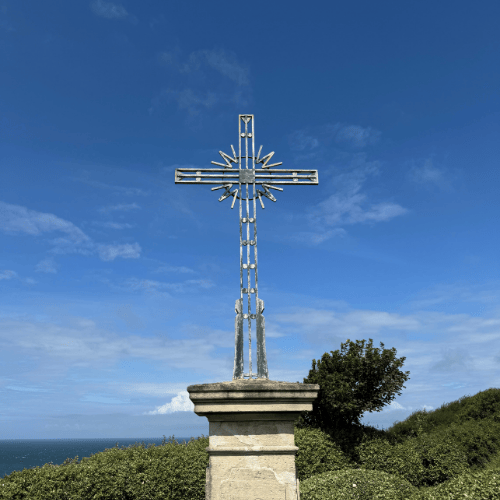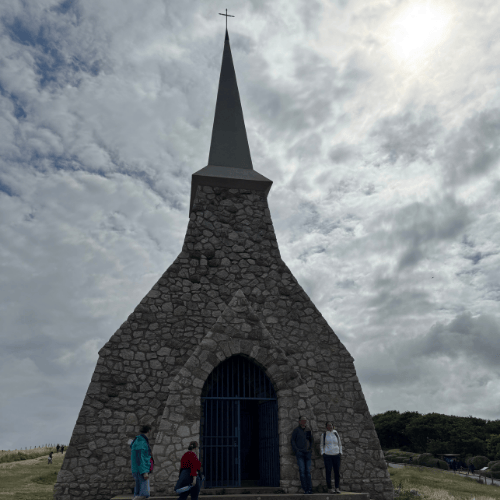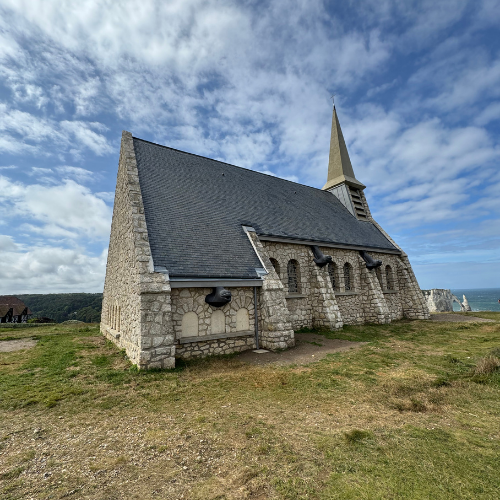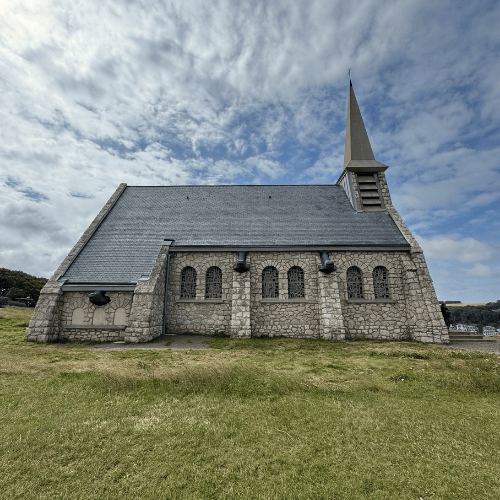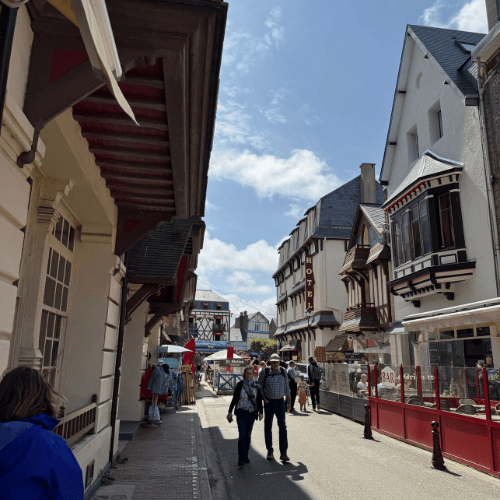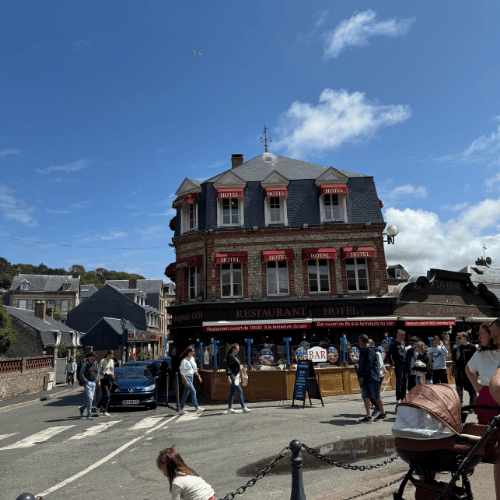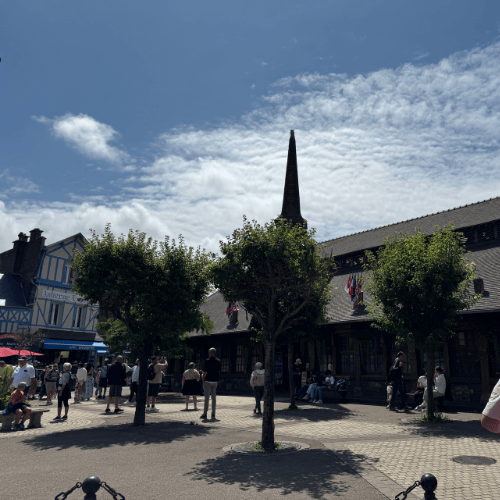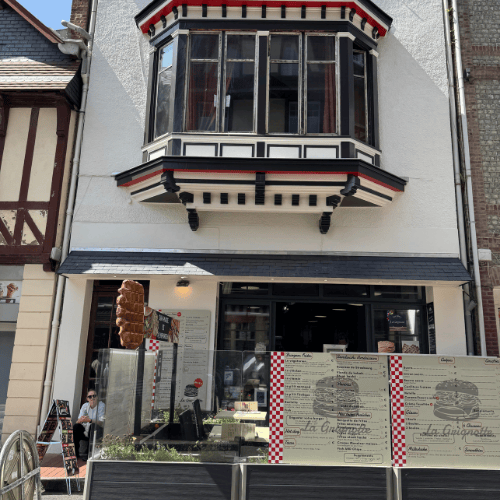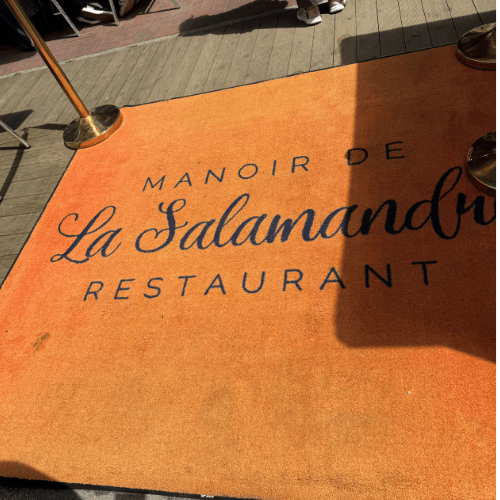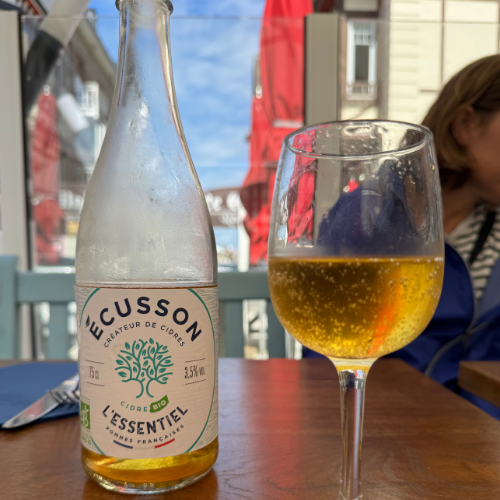Things to Do in Étretat: A Day Along the Cliffs and Coast
Étretat was a small fishing village before it became popular with writers and painters in the 19th century. Guy de Maupassant spent summers here, and Monet painted the cliffs dozens of times. The arches and needle-shaped rock formations were already famous by then, and the town grew as a quiet coastal escape. The cliffs also played a role in WWII, with bunkers and lookout points still hidden along the trails.
Getting to Étretat
We’ve been to Étretat more than once. It’s small enough to explore in a day, but there’s always something different to see depending on the season, the trail, or how long you spend in town.

Hiking to the Gardens
We parked in the lot right by the beach and took the cliff trail up to Les Jardins d’Étretat. It’s a short, steep hike that takes about ten minutes. The views open up fast. It was windy and chilly even in the middle of summer, but not crowded.
Les Jardins d’Étretat
Les Jardins d’Étretat are small but packed with detail. The garden wraps around a villa once owned by actress Madame Thébault, who invited Claude Monet to visit the town in the early 1900s. Today, the site is filled with sculpted hedges, winding paths, and oversized art pieces, including a series of surreal stone heads that peek out of the greenery. It’s strange in the best way. Not the kind of place you expect to find at the top of a cliff.
You don’t need more than 30–40 minutes to walk through, but it’s worth taking it slow. The views from the upper terrace stretch across the sea and the surrounding cliffs.
Notre-Dame-de-la-Garde
Just before the gardens is Notre-Dame-de-la-Garde, a small chapel that sits near the top of the cliff. The original structure was destroyed during World War II, and the current one was rebuilt in the 1950s. It’s simple and understated, but the location makes it feel more significant. The view from the hilltop is wide open and worth the hike.
Exploring the Town
After visiting the gardens, we walked back down into town. There’s a tourist train that runs between the cliffs and the main square every 30 minutes, but we skipped it. The town itself is small but walkable, with cafés, bakeries, and a few side streets worth exploring. Watch out for the seagulls, we saw one snatch a sandwich right out of a mans mouth, he wasn’t happy, but the seagull was.
Where We Ate
We had lunch at Manoir de la Salamandre, a restaurant attached to a hotel with outdoor tables along the main street. We ordered mussels and local apple cider. The food was good, but the cider was even better, dry and crisp, the kind you want to take home. Which we did!
Cider Tasting Before We Left
Before leaving, we stopped into La Mer à Boire, a small cider shop that offers tastings. It’s quiet, friendly, and has a good selection. We sampled a few varieties and picked up bottles to bring home. It’s a great stop if you want something local and low-key.
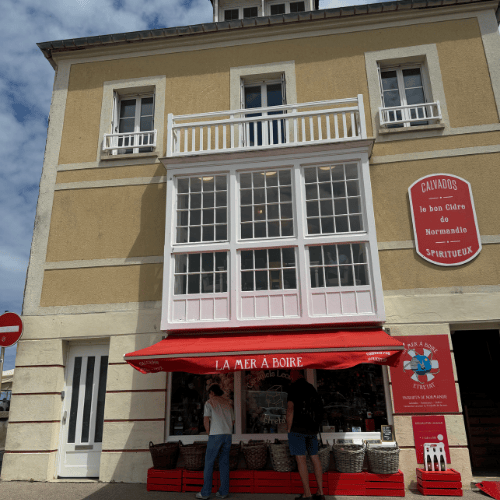
Know Before You Go
When to visit: Late spring or early fall. Summer is windier than expected and can get crowded by midday.
How to get there: Étretat is about 2.5 hours from Paris by car. No train station in town, but you can get close by bus from Le Havre or Bréauté-Beuzeville.
Where to stay: Étretat works as a day trip, but if you’re staying overnight, book early. There are a few small hotels and rentals near the beach.
What to pack: Comfortable shoes for gravel paths, and a jacket — the cliffs are exposed and windy even in summer.
Planning More Coastal Travel in France?
If you’re exploring Normandy or heading along the coast, check out:
Things to Do in Honfleur – Harborside cafés, wooden churches, and seafood lunches
Things to Do in Rouen – Gothic cathedrals, historic streets, and a proper French dinner
A Weekend in Giverny – Monet’s garden, Seine views, and a stay at Domaine de la Corniche

